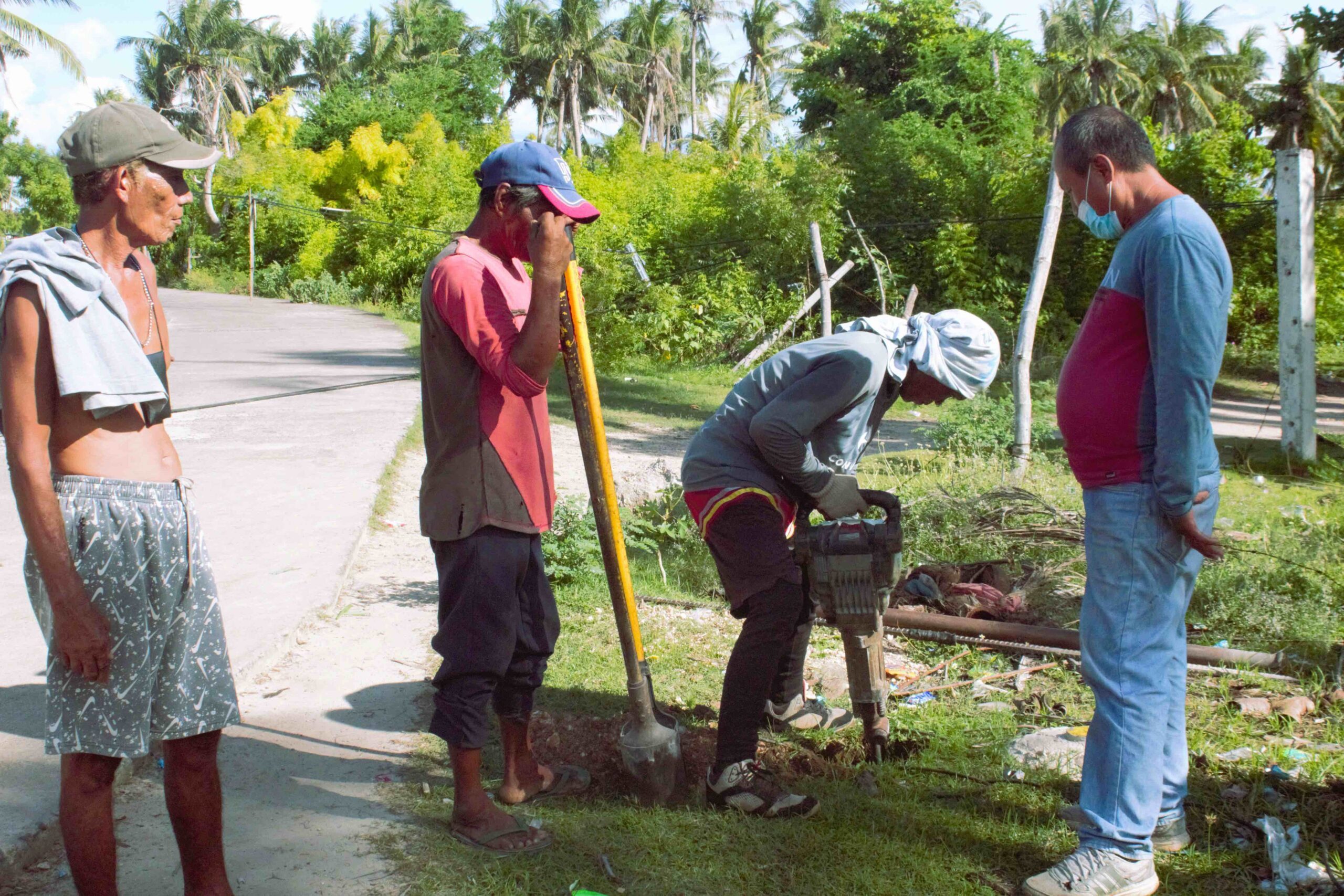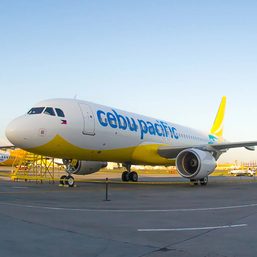SUMMARY
This is AI generated summarization, which may have errors. For context, always refer to the full article.

CEBU, Philippines – It has been six long months since Ronnie Ompad, a local cafe owner, has seen tourists come in droves to the island of Olango – a tourist destination still in ruins from Typhoon Odette’s onslaught in December 2021.
Ompad used to be a diving instructor but the COVID-19 pandemic, which sent the Philippine government to impose one of the world’s longest lockdowns, took away that job.
Looking to survive the lockdown, Ompad opened a coffee shop in June 2021, serving locals and the few visitors from the government and nongovernment organizations visiting the famous bird and marine sanctuary.
He called it Bonsod Coffee & Tea, using the Bisaya word for fish pen or the traditional bamboo enclosure used to grow/culture fish.
Olango was just seeing an uptick in visitors when Odette slammed into the Visayas group of islands, laying waste to the province of Cebu, destroying or damaging homes, roads, electric posts, and government facilities.
In first semester of 2022, Ompad’s cafe has been a losing proposition, he told Rappler in an interview on Thursday, June 16.
While network signals have returned, there is still no electricity inside the cafe, despite efforts from Mactan Electric Company (MECO) to fully restore power on the island.
Infrastructure problems also hamper the return of tourists even as the cost of commodities continue to rise.
With only the Angasil port currently working at full capacity to the island from the mainland, Ompad said, “Grabe gyud ang drop sa customer (the drop in customers is huge).”
“It’s frustrating. We have to change our menu because making coffee and waffles need electricity,” Ompad said in a mix of English and Cebuano.
During days without customers, he has no choice but to give away stock to neighbors before they spoil.
“We’re all struggling here and yet we still have expenses to pay for,” Ompad said.

Lapu-Lapu City, the city that administers Olango, suffered the destruction of the Hilton Port and Angasil Port – the two main ports going to the island. This hampered rehabilitation efforts.
Gilbert Pagobo, senior vice president of MECO told Rappler in an interview on June 14 that it has restored more than 80% of the island’s power supply.
But consumption is only at 30%, because the company has yet to finish attaching the connections between newly-installed utility poles and residents’ homes.

More aid needed
Aside from tourism, Olango Island’s economy also relies on its marine agriculture and fishing industry.
Alex Baring, head of the Lapu-Lapu City Agriculture and Fishery Office, told Rappler in an interview on June 16 that there was still much work to do in terms of rehabilitation for the island.
“[Economic loss] was estimated at P2.5 billion in the whole Central Visayas region,” he said.
In an earlier Rappler article, Baring said damage to the agricultural and fish industry in Olango was estimated at P38 million.
Baring said Odette destroyed one-third of the entire coral reef population in Olango’s fish sanctuaries.
Only 15% of the facilities of the fisherfolk community have been rebuilt since then, he added.
“Most of the fisherfolk are dependent on the provisions coming from the government and NGOs,” Baring said
Juan Amorin, head of the local fishermen group in Sitio Calipay, Barangay Tingo, said they have received help from relief organizations and the Philippine Navy.
“Nakadawat mi og napulo nga gagmay ug usa ka dako nga service boat sa Navy ug kinse ka makina gikan sa (relief organizations),” Amorin said. (We received ten small boats and one big service boat from the Navy and fifteen motor engines from the relief organizations).
Commander James Francis Lugtu of the Naval Reserve Center in Eastern Visayas said that after distributing relief goods to the barangays, the livelihood of the fisherfolk communities was their next priority.
“We made sure na mapalitan ang mga bangka nila,” he told Rappler. (We made sure their boats were replaced.)
“And hindi pa rin tayo matatapos doon, (And we won’t stop there.) We will still push through with the construction of panggals (fishtraps) and payaw (bamboo rafts) to help their livelihoods,” he added.
Lugtu said they collaborated with organizations like Global Mobility Service Philippines Inc. and Impact Circle Finance Philippines Inc. to provide aid for Olango folk.
Kazumasa Nakashima, Director of Global Mobility Service Philippines Inc., told Rappler in an interview that they are hoping to help more communities in Olango Island and in Bohol by providing them with engines for their fishing boats.
“I would like for fisherfolks who got help from us to pay it forward and for those who need help to call us and we will help,” Nakashima said.
– Rappler.com
Add a comment
How does this make you feel?









There are no comments yet. Add your comment to start the conversation.